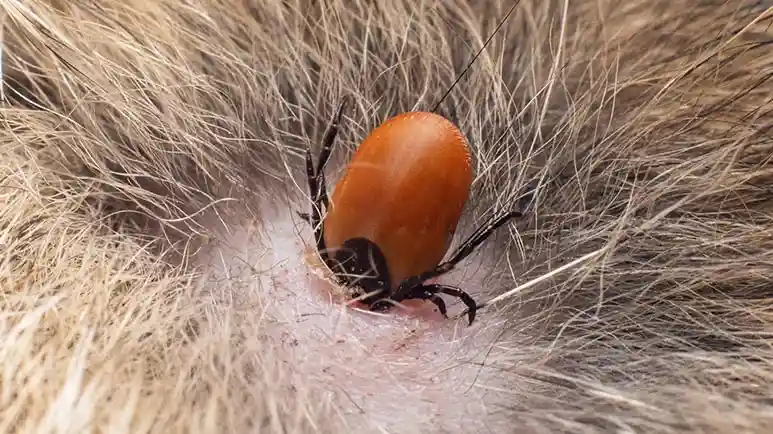Tularemia: Watch Out for This Easily Transmitted Fever You Can Catch From Your Pet
Although relatively rare, one part of the country experienced an outbreak last summer. Spread from one animal to another (humans, too), this bacterial disease can lead to death if not treated with antibiotics. And avoid this type of raw, frozen meat unless you know for sure it's bacteria free.

STORY AT-A-GLANCE
- Tularemia, also called rabbit fever, is a relatively rare zoonotic bacterial infection that is seen more often in cats than dogs. Humans, fish, birds, pigs, horses, and sheep can also acquire the disease
- Tularemia can be transmitted through the bite of a tick, deer fly, or flea; ingestion of an infected animal, typically a rabbit or rodent; or through exposure to an infected animal or contaminated soil or water
- A mild infection may cause no obvious symptoms, or a pet may suffer briefly from lack of appetite, lethargy, and a low-grade fever. Signs of a more serious infection include dehydration, high fever, swollen lymph nodes, ulcers in or around the mouth, and jaundice
- Treatment of tularemia involves antibiotic therapy, and the sooner the disease is diagnosed and treated, the better the prognosis
Editor's Note: This article is a reprint. It was originally published May 13, 2015.
Tularemia, also called rabbit fever, is a relatively rare disease in the US, seen more often in cats than dogs. But a small outbreak in Fort Collins, Colorado last summer serves a heads-up for all of us with pets. Wild rabbits in the area were dying in unusually high numbers, and tularemia was determined to be the culprit in one rabbit that was tested.
Tularemia Is a Zoonotic Bacterial Disease
It is the Francisella tularensis bacteria that causes tularemia. In North America, the bacteria is primarily spread from one animal to another by ticks, including the American dog tick, the Lone Star tick, and the Rocky Mountain wood tick. Ticks pick up the infection by feeding on infected animals or birds, and can transmit the bacteria to other animals at any point in their two-year life cycle. Fleas and deer flies can transmit tularemia as well.
Pets can also be exposed by eating an infected rabbit or rodent. F. tularensis invades the organs and body fluids of infected wild animals, which in turn contaminates the environment. The bacteria can live for weeks to months in soil, vegetation, and water.
The bacteria can also infect a cat or dog through the skin, or by entering the airways, eyes, or gastrointestinal system.
In addition to rabbits and other wild rodents, tularemia can also be carried by beaver and muskrats. Humans, dogs, cats, fish, birds, pigs, and horses can get the disease. Sheep are especially vulnerable; cattle are rarely affected.
Symptoms of Rabbit Fever
Tularemia is seen more often in cats than dogs, and in young versus adult animals. A pet with a mild infection may show no symptoms or may suffer briefly from lack of appetite, lethargy, and a low-grade fever.
More serious infections can cause dehydration, high fever, swollen lymph nodes, eye infections, ulcers in or around the mouth, draining abscesses, jaundice, and an enlarged liver or spleen.
In humans, signs of infection include fever, chills, headache, muscle aches, chest pain, and coughing. If the mode of transmission was through the skin, there are typically skin ulcers and swollen glands. If the bacteria was ingested, there can be a throat infection, abdominal pain, diarrhea, and vomiting.
Diagnosis and Treatment
Tularemia is diagnosed based on clinical signs, evidence of infection in lab work, and a specific test for F. tularensis antibodies. However, antibodies may not be detectable early in the disease.
Growing F. tularensis in the laboratory from discharges or tissues from the affected animal also confirms the diagnosis.
Treatment of tularemia involves a course of antibiotics, and is usually effective as long as the infection is caught early. Any pet taking antibiotics should also be started on a probiotic supplement. If the disease goes untreated, the mortality rate is high, so it’s extremely important to see your veterinarian if your pet is symptomatic and you think there’s a chance of exposure to F. tularensis.
A cat or dog with tularemia should be isolated from other animals, and human caretakers should take appropriate precautions to prevent spread of the disease. The bacteria most commonly enters the body through damaged skin and mucous membranes, or through inhalation. While humans are most likely to acquire the infection by tick bite, handling an infected animal without taking precautionary measures (mask, gown, and gloves) increases the risk of disease transmission.
Preventing Tularemia
Larimer County in Colorado where the tularemia outbreak occurred last summer offers guidelines to prevent contracting the disease, including:1
- Avoid handling dead animals.
- Leash your pets when outdoors and keep them away from dead animals.
- If a dead animal must be moved, avoid direct contact with it. Put on a repellent to protect yourself from its fleas or ticks, and use a shovel to scoop it up. Place it in a plastic bag and dispose in an outdoor trash receptacle. Wash your hands well afterwards.
- When outdoors near places where rabbits or rodents are present, wear an insect repellent.
- Use a tick and flea preventative on pets. Consult your veterinarian if you are unsure what to use.
It’s also important to note that F. tularensis can live in frozen rabbit meat for over three years.
Sources and References
- PetMD July 14, 2014
- PetCoach
- PetMD, November 12, 2010
- 1 Larimer County News Release, July 3, 2014











